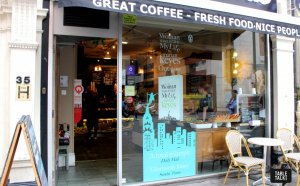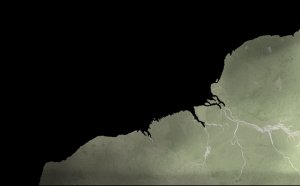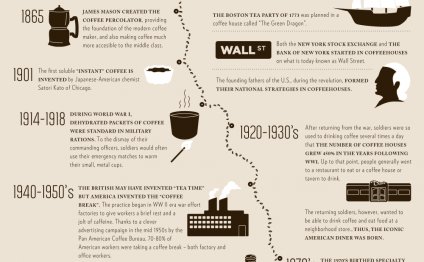
Coffee in America
I’ve written a lot in the past about the social and environmental impacts of coffee, one of the world’s most popular beverages and most highly traded commodities. I have considered writing a book about it (let me know if you think you’d be interested), but I’ve always been a little hesitant about how much the average consumer really wants to know about it.
Many of us adore the taste and other sensations of a hot cup of joe, not to mention the comfort and ritual of it, but how much do we want to look behind the bean? For all the talk of caffeine, science actually doesn’t know a lot about its effects on the human body, much less the hundreds of other biologically active ingredients (and their interactions) present in your latte. There’s a lot of debate on how healthful coffee is, and studies often seem to contradict each other.
Coffee also has a complex relationship with culture and the environment. Done “right, ” in traditional shade-grown operations, coffee can help preserve valuable semi-forest and forest habitat. It can provide work for rural people and is a primary export of many developing countries.
Done “wrong, ” coffee cultivation can result in cleared rainforests, large inputs of pesticides, poisoning of workers, brutally low wages, and degradation of habitats. Many certification schemes have cropped up around the world to give market signals to better producers. I have written extensively about Fair Trade, bird-friendly, organic, Rainforest Alliance-certified, and other programs.
Coffee people are often as passionate about their preferred eco-label as they are about their single-country-of-origin bean or favorite blend, and there are pluses and minuses to every certification. The old adage that coffee “should be triple certified” (planet, people, no pesticides) has largely fallen out of favor, due to the high costs to growers for enrollment in each program and the large areas of overlap among organic, Fair Trade, Rainforest Alliance, and other standards.
Coffee also has a rich cultural history, both in areas where it is grown and in the wider world. Prized seeds were smuggled into remote jungles to jumpstart illicit plantations, and coffeehouses evolved as centers for alternative gatherings. The coffeehouse has often become a lightning rod for debate about globalization, corporate responsibility, and local ownership. (Activists picketing the first Starbucks in my college town once screamed, “Is your coffee worth it?” at me, although they looked bewildered when I told them I had ordered hot chocolate. A week later the large glass windows of the storefront were smashed.)
So although I am now caffeine sensitive myself, and can only enjoy the occasional cup of decaf (I know, sacrilege), I reviewed this new infographic with interest.
Brian Clark Howard is a writer and editor with NationalGeographic.com. He was formerly an editor at The Daily Green and E/The Environmental Magazine and has contributed to many publications, including TheAtlantic.com, FastCompany.com, MailOnline.com, PopularMechanics.com, Yahoo!, MSN and elsewhere. His latest book, with Kevin Shea, is Build Your Own Small Wind Power System.
RELATED VIDEO

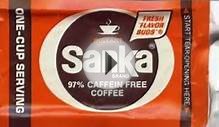
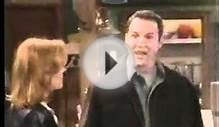
Share this Post
Related posts
First in Coffee
For anyone interested in gender issues and equality, 2014 was a very exciting year. There was the inspiring #HeForShe movement…
Read MoreHistory of Coffee in Australia
Coffee originally grew in the highland rain forests of Ethiopia. Over 1500 years ago it was taken to Arabia and then on to…
Read More
 Coffee is a brewed beverage with a bitter flavor prepared from the roasted seeds of the coffee plant. The beans are found in coffee cherries, which grow on trees cultivated in over 70 countries, primarily in equatorial Latin America, Southeast Asia, South Asia and...
Coffee is a brewed beverage with a bitter flavor prepared from the roasted seeds of the coffee plant. The beans are found in coffee cherries, which grow on trees cultivated in over 70 countries, primarily in equatorial Latin America, Southeast Asia, South Asia and...
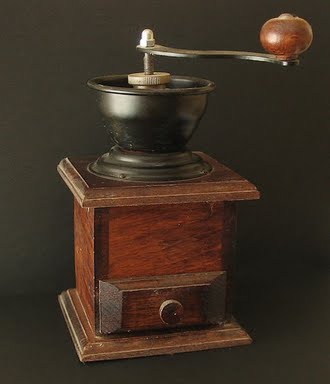 Coffee preparation is the process of turning coffee beans into a beverage. While the particular steps vary with the type of coffee and with the raw materials, the process includes four basic steps; raw coffee beans must be roasted, the roasted coffee beans must then...
Coffee preparation is the process of turning coffee beans into a beverage. While the particular steps vary with the type of coffee and with the raw materials, the process includes four basic steps; raw coffee beans must be roasted, the roasted coffee beans must then...
